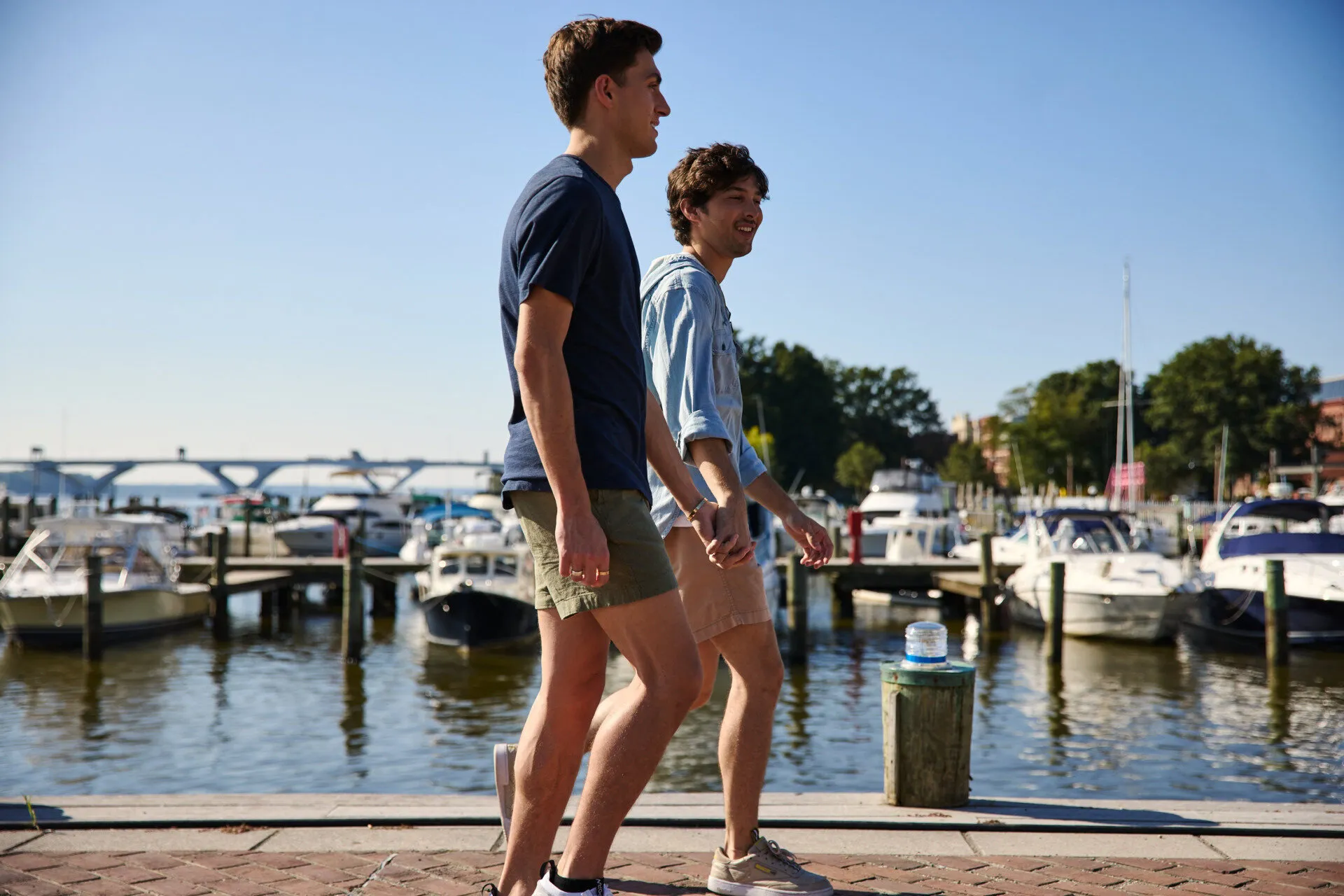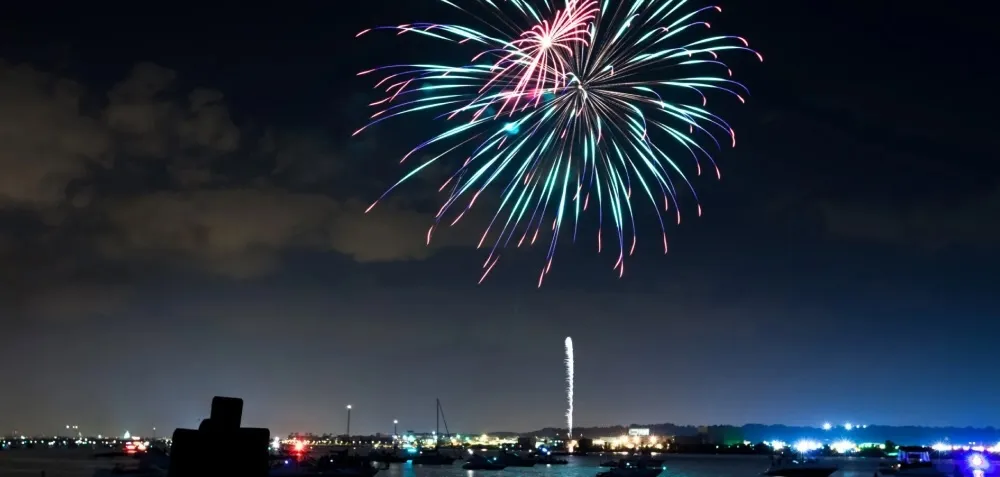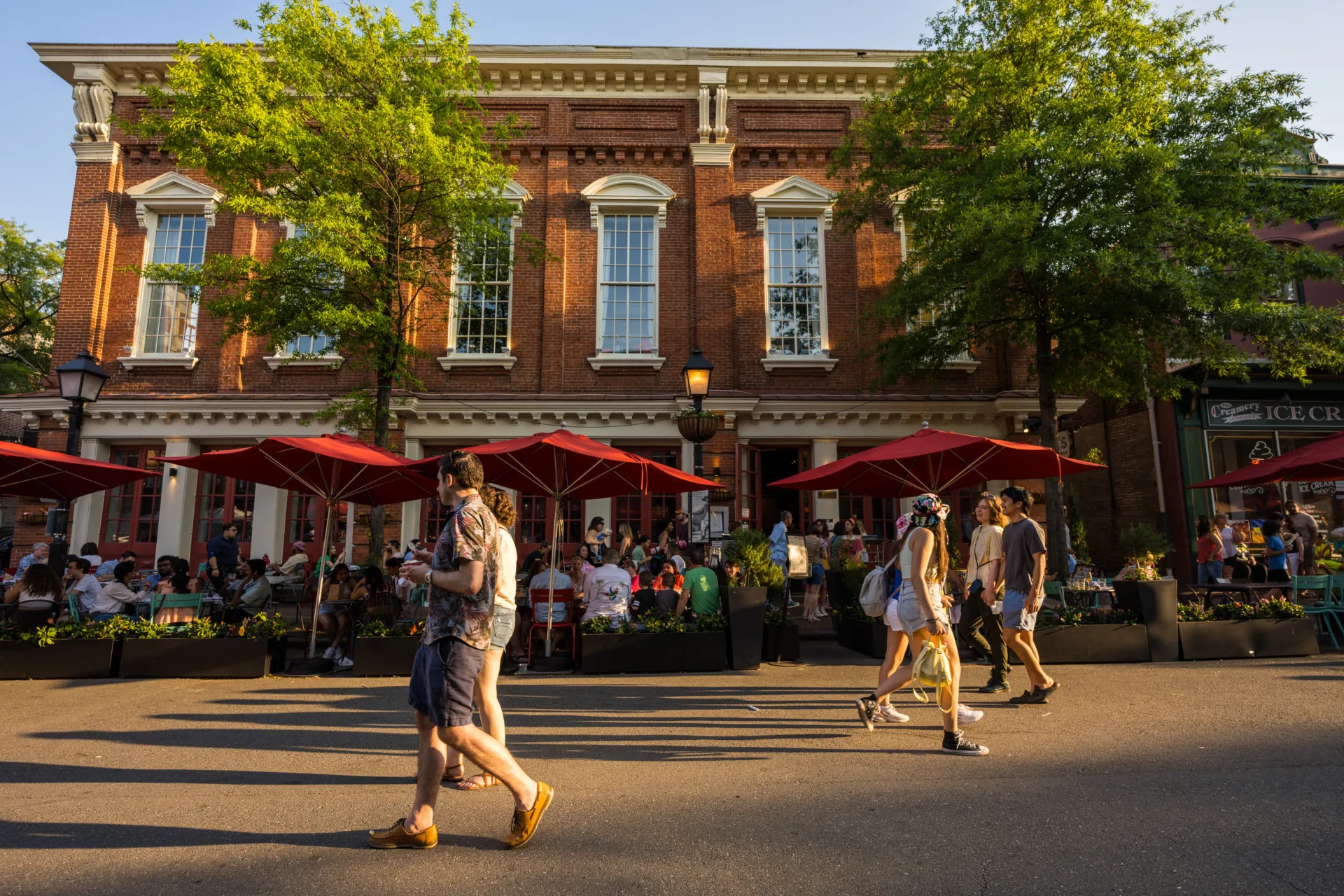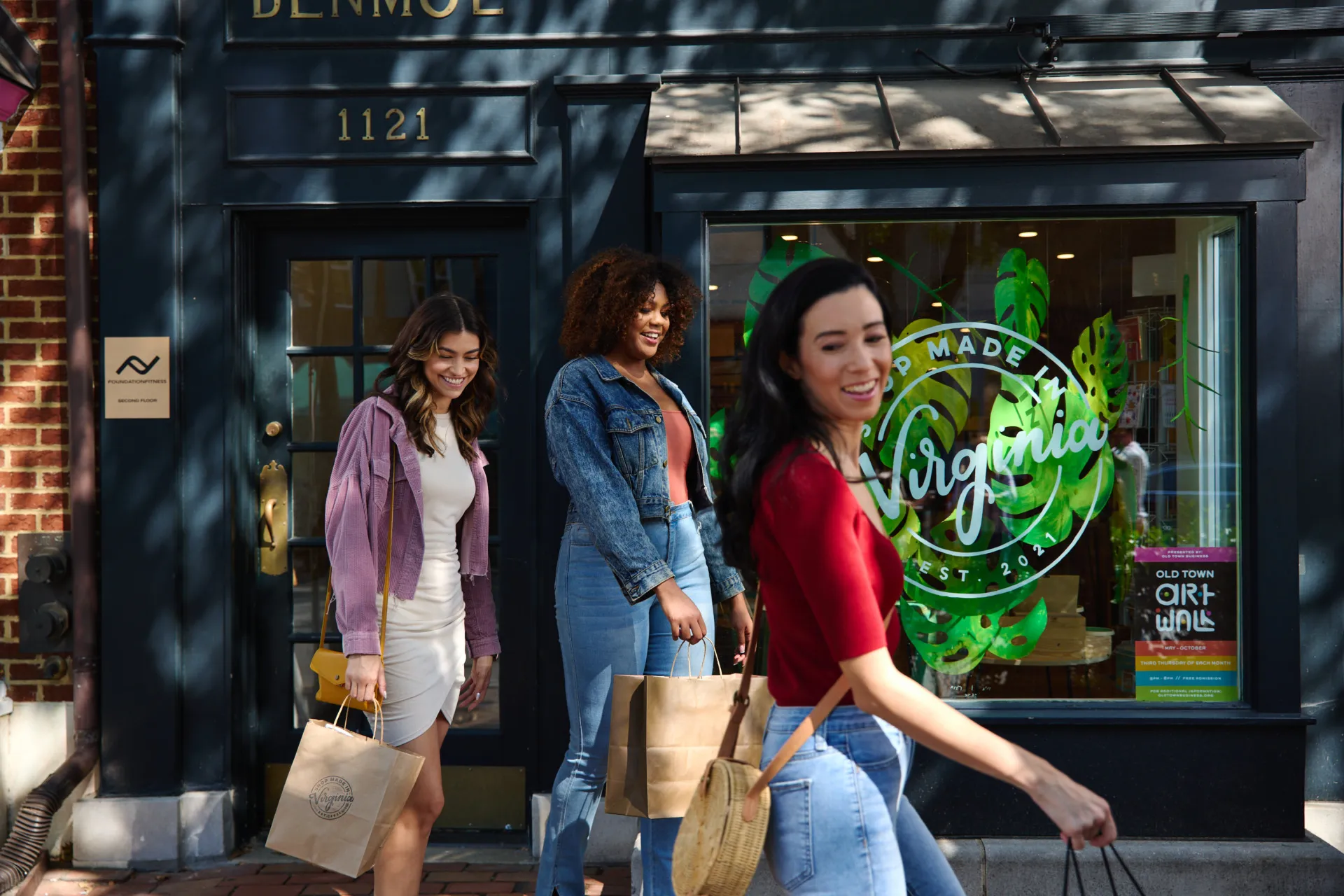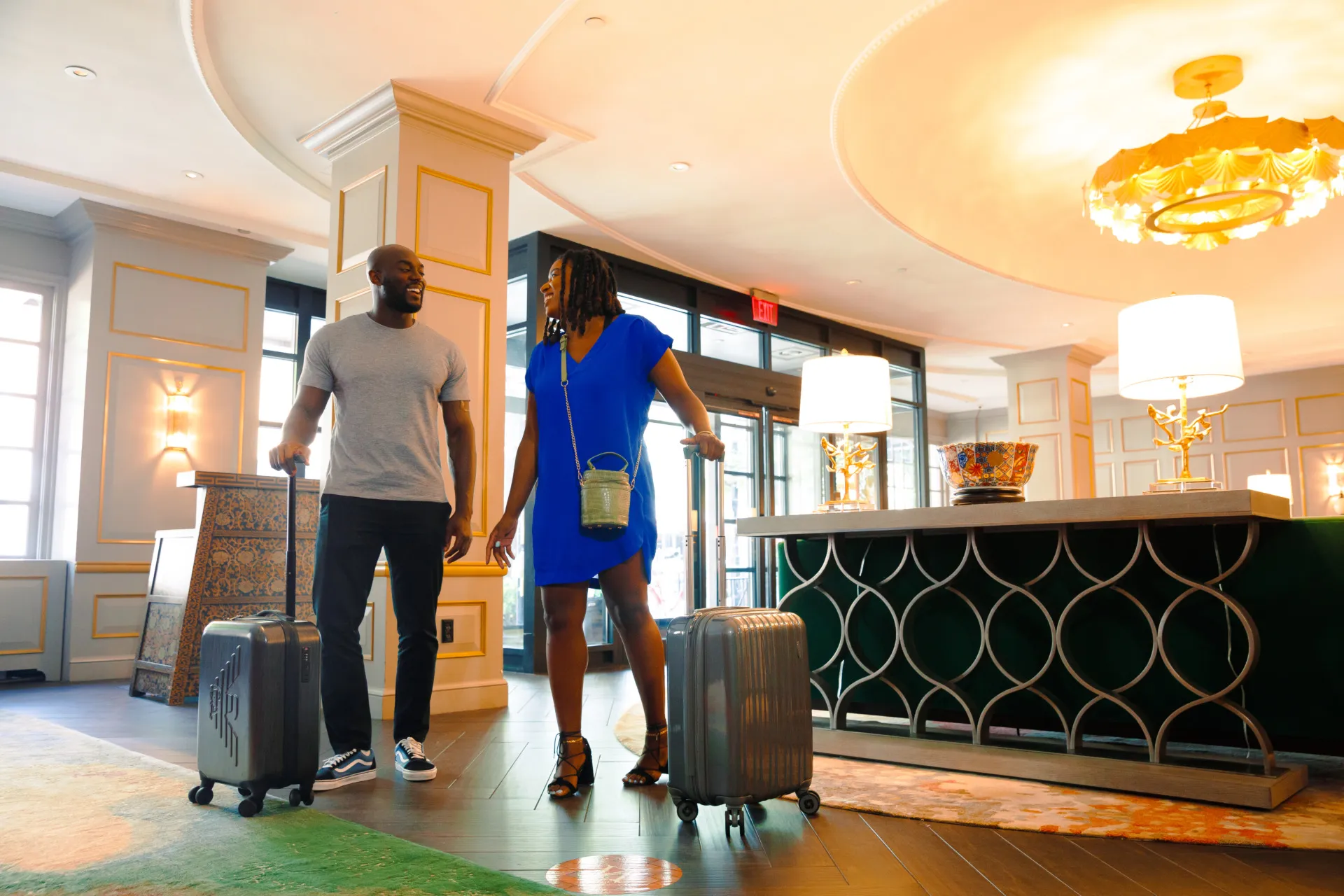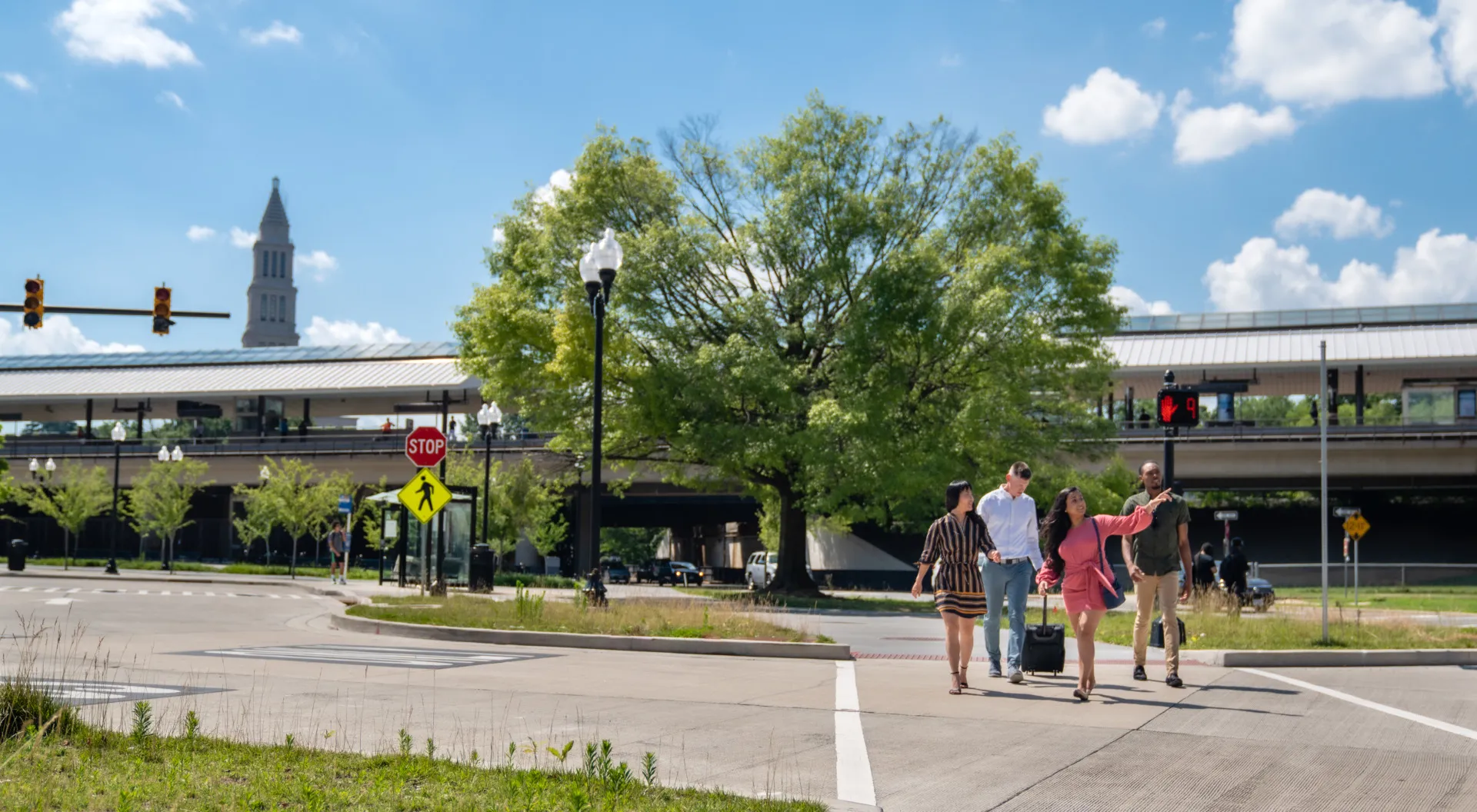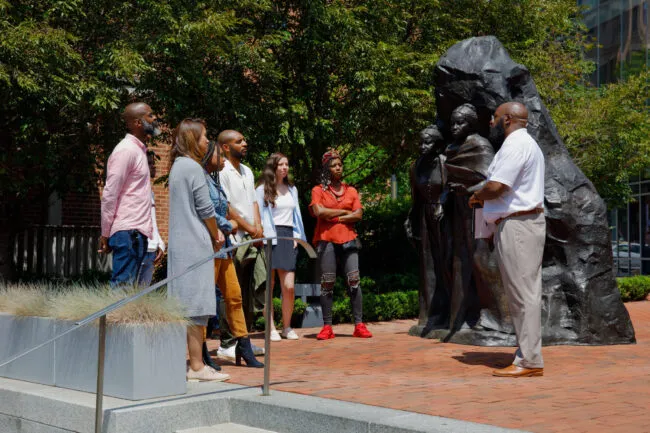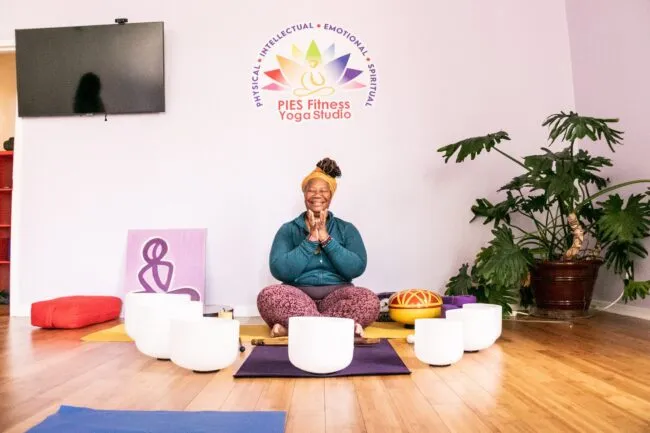Use our nine-site driving tour to start exploring the African American history that shaped Alexandria and the United States, from D.C.’s onetime southern cornerstone laid by self-taught mathematician Benjamin Banneker to the site of one of the nation’s earliest sit-in protests and more. Find parking information for each site so you can linger where you feel moved.
Historic Sites
1. Site of the 1939 Alexandria Sit-In
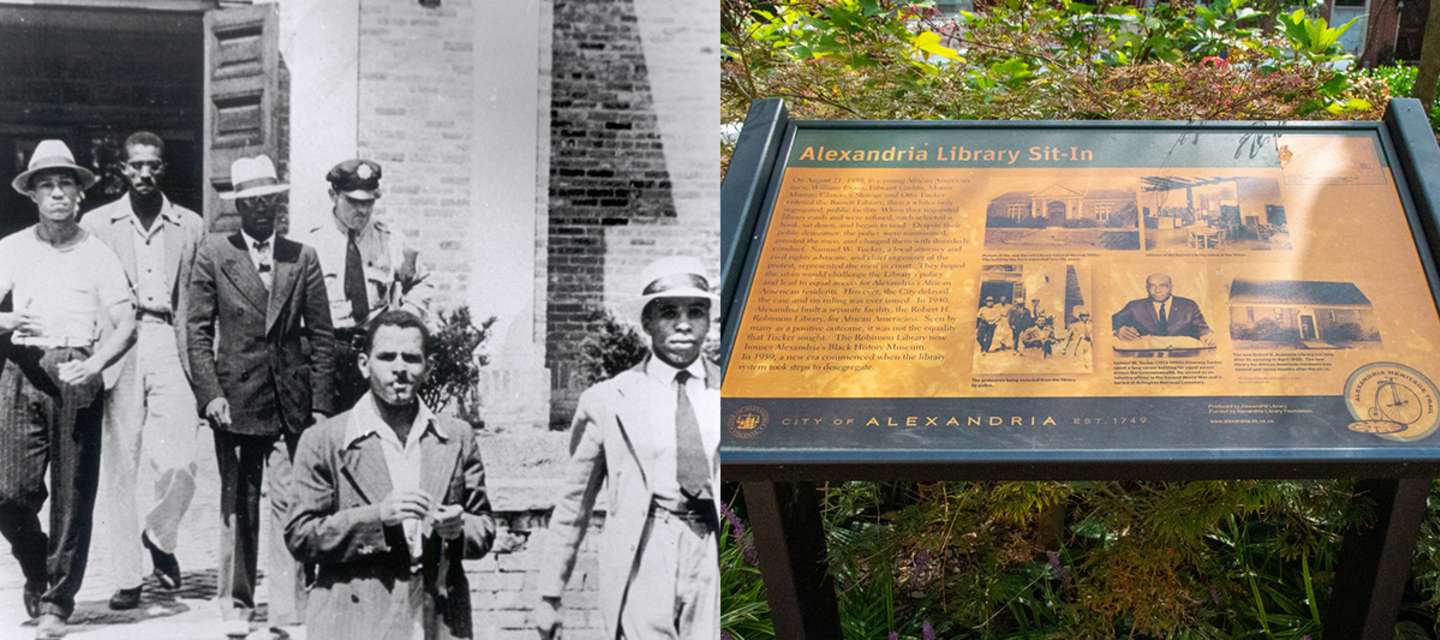
Barrett Branch Library and Interpretive Panels
717 Queen St.
In 1939, Barrett Branch Library was the backdrop for one of the nation’s earliest recorded civil rights sit-ins, organized by then 26-year-old lawyer Samuel W. Tucker. Five young African American men separately entered the library and requested a card. When denied, they each quietly sat and began to read. Once Tucker’s teenage lookout informed him that the police were en route, Tucker ensured that local press outlets were in place to photograph the young men leaving, unforced. The sit-in catalyzed the creation of the segregated Robert Robinson Library, which Tucker refused in principle to patronize, now the site of Alexandria’s Black History Museum. Robinson Library remained in use until desegregation in the 1960s. Look for the interpretive panels near the entrance of Barrett to learn more.
How to access: Timed parking is available in the blocks surrounding the library. Note that Queen St. is one-way (eastward).
Explore More:
- Visit the Alexandria’s Black History Museum at 902 Wythe St. to learn more about the sit-in and discover curated historical and cultural collections.
- Across the street from the museum is the African American Hall of Fame at Charles Houston Recreation Center. See statue of former Alexandrian Earl Lloyd, the first Black athlete to play in a NBA game, installed to commemorate the hundredth anniversary of Parker-Gray High School, the city’s African American public high school during segregation.
2. Alfred Street Baptist Church
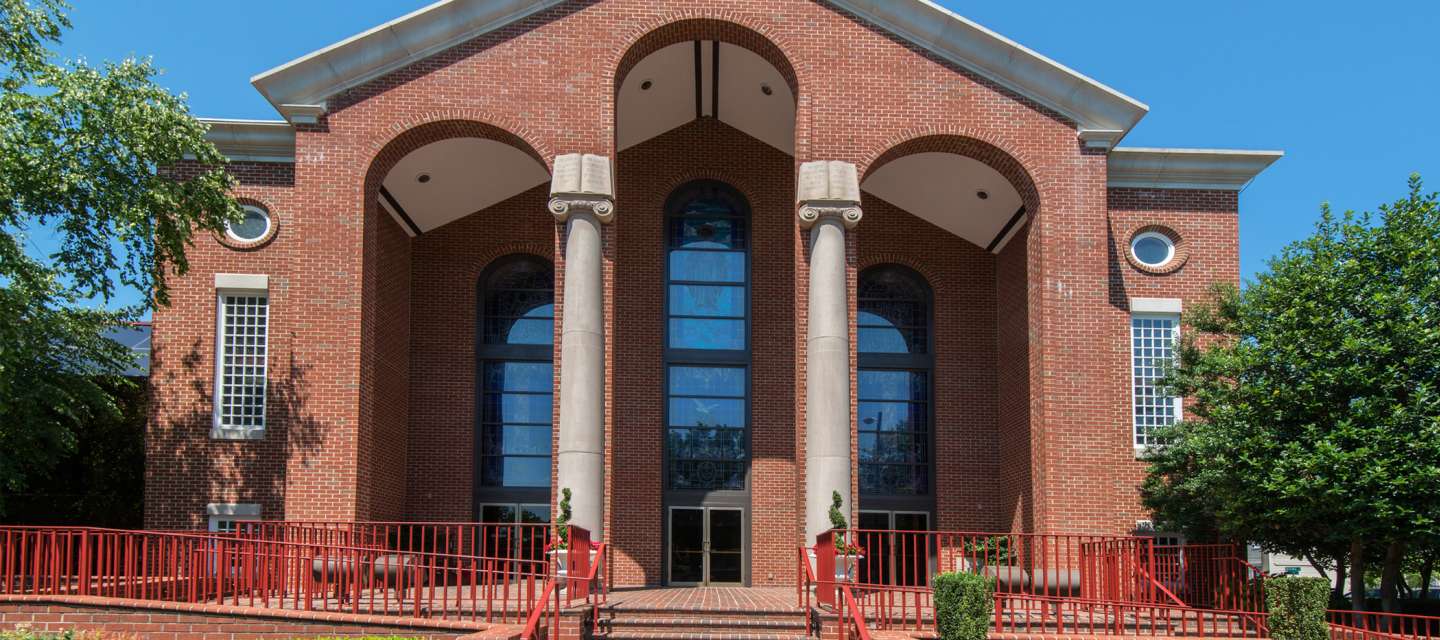
Historic Marker at the Corner of Duke and Alfred St.
301 S. Alfred St.
Alfred Street Baptist Church is the city’s oldest active historically African American congregation, dating back to the early 19th century. Built in 1855, the brick Alfred Street Baptist Church was likely designed and constructed by free Black craftsmen. The sanctuary was a religious, educational and cultural landmark in the Bottoms neighborhood, the city’s earliest free Black community, and has been remodeled and expanded over the years. 1921, the Rev. Andrew Warren Atkins helped found the first African American public high school in the city, Parker-Gray High School. The church also boasted a 1,600-volume lending library for Black citizens when the existing libraries served white Alexandrians only. Today, the church’s congregation is one of the region’s largest with more than 7,000 members.
How to Access: Street parking is available along Duke and Alfred Streets.
3. Edmonson Sisters Statue
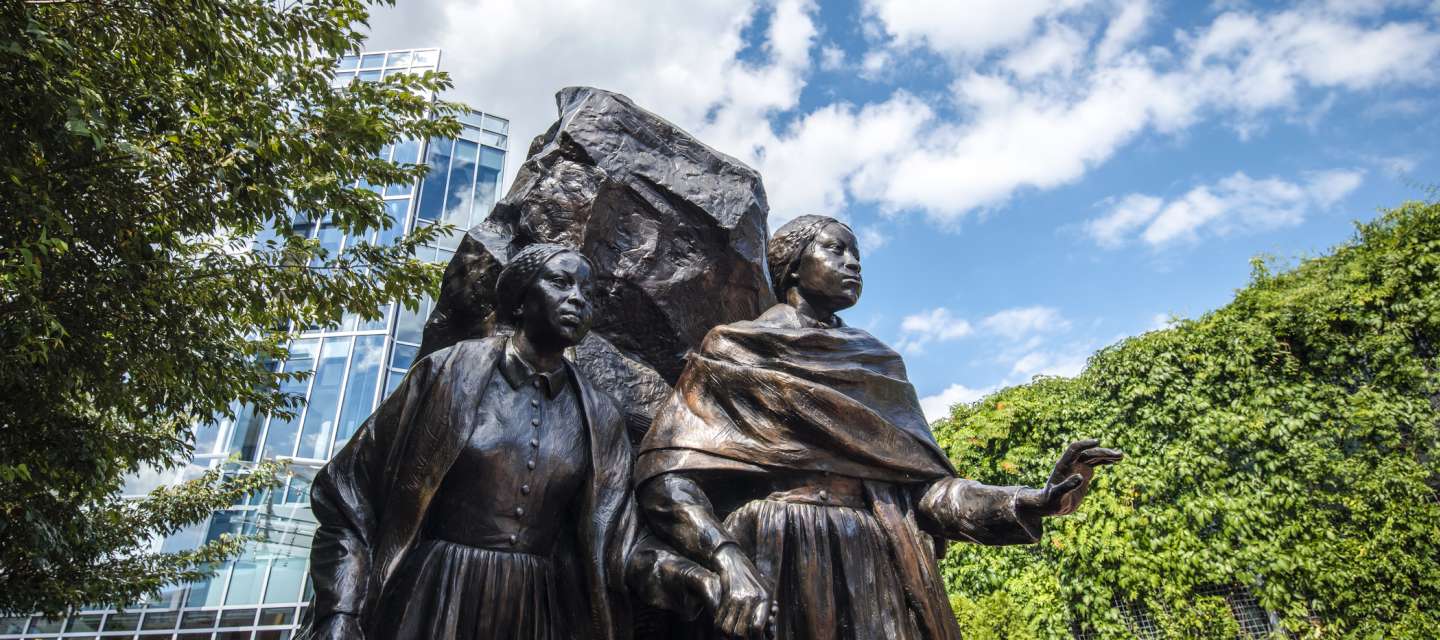
1701 Duke St.
Visit the Edmonson Sisters sculpture at 1701 Duke St., a gorgeous tribute to sisters Mary and Emily Edmonson by bronze work artist Erik Blome. Born into slavery, Mary and Emily attempted escape at the ages of 15 and 13, respectively, in April 1848 aboard the schooner Pearl, which sailed from Washington, D.C. The sisters were captured and held in bondage at the Bruin “Negro Jail” in Alexandria until their father purchased their freedom with help from abolitionist Rev. Henry Ward Beecher, whom the sisters later partnered with in anti-slavery activism, along with his sister Harriet Beecher Stowe.
How to Access: Street parking is available on Reinekers Ln., and garage parking is available at Edmondson Plaza/One Parking Garage (1701 Duke St.). The sculpture is located directly across Duke St. from Whole Foods.
Explore More:
- Steps away from the statue, the former Bruin “Negro Jail” is located at 1707 Duke St. Learn more on the plaque posted outside this building, now a business office.
4. Freedom House Museum
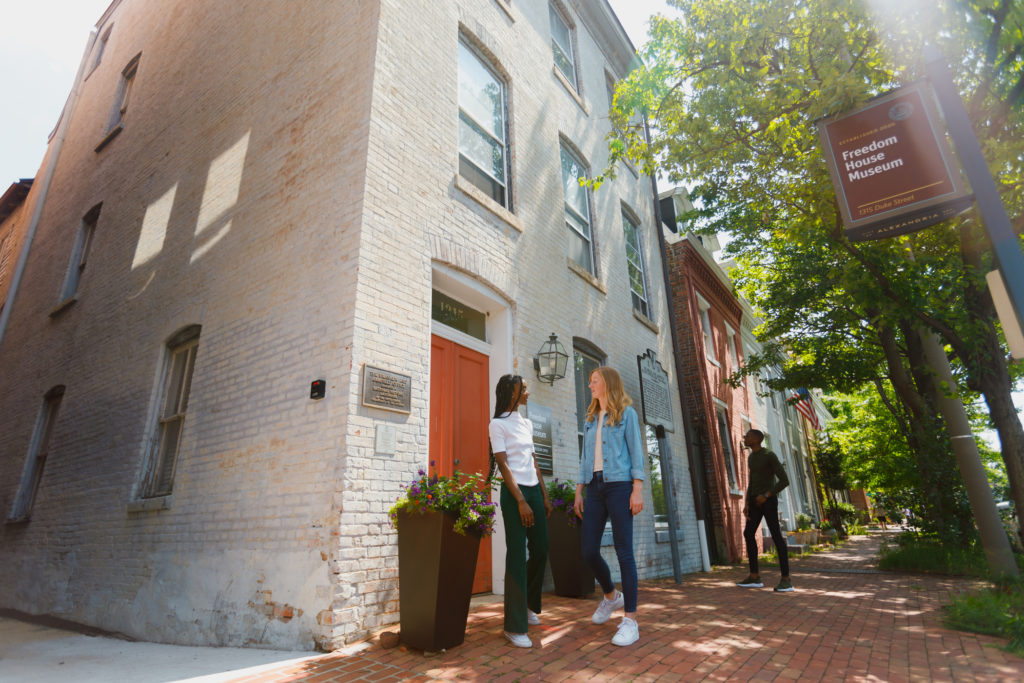
Note: Currently under renovations. Check website for hours and updates.
1315 Duke St.
The Freedom House Museum is what remains of a large complex dedicated to trafficking thousands of Black men, women and children from 1828-1861. Newly reopened in May 2022, this museum seeks to reframe white supremacist history. With three floors of exhibitions, Freedom House honors the lives and experiences of the enslaved and free Black people who lived in and were trafficked through Alexandria. Reserve a ticket in advance to visit the museum and learn, reflect and advocate for change.
How to Access: Two-hour street parking is available on nearby residential streets. There are also parking garages in Old Town within a six-nine block walk.
5. Contrabands & Freedmen Cemetery
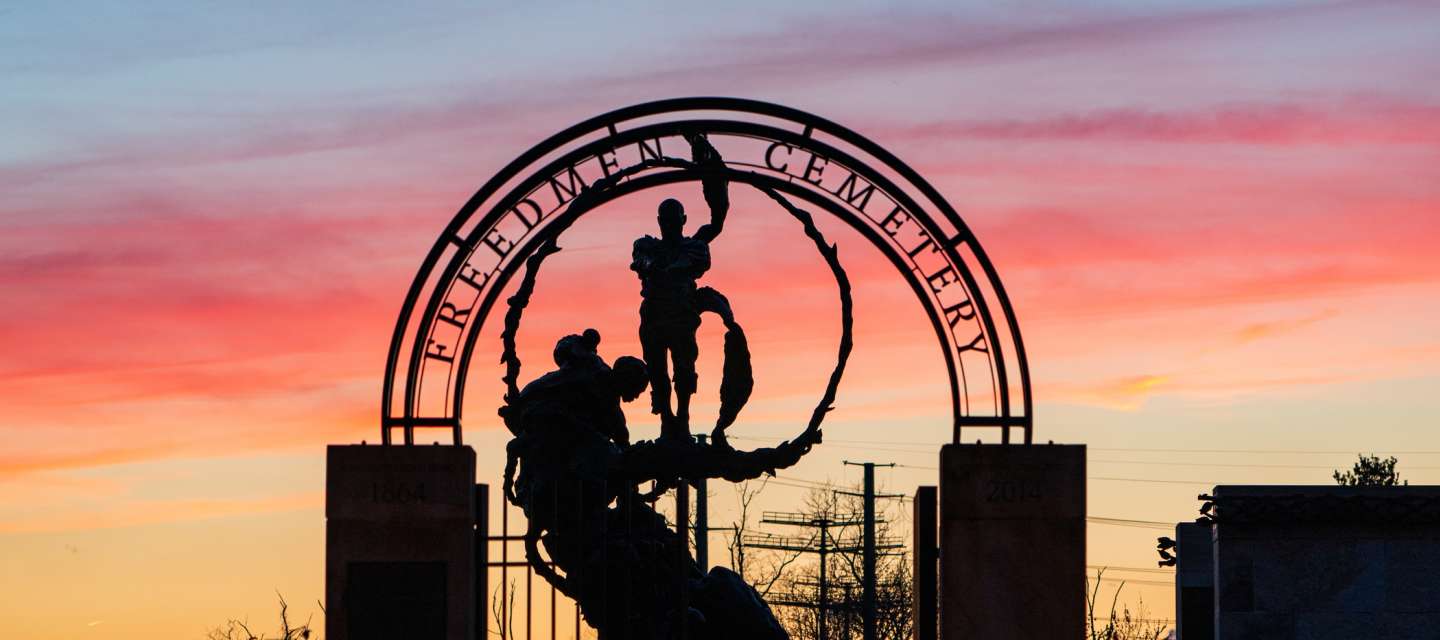
1001 S. Washington St. (at the corner of Church St.)
Between 1864 and 1869, the Contrabands and Freedmen Cemetery served as the burial place for about 1,800 African Americans who fled to Union-occupied Alexandria to escape from bondage. The memorial park commemorates the free African American men, women and children interred on the cemetery grounds. Dedicated in 2014, the memorial features a sculpture by artist Mario Chiodo, creator of the Yoda prototype from Star Wars, called The Path of Thorns and Roses, an allegorical depiction of the struggle for freedom. Bas-reliefs depicting the flight to freedom and contraband education were completed by late local sculptor Joanna Blake and tell vivid stories of what life was like for the newly freed. The contraband story figures prominently in the national PBS Civil War drama series Mercy Street.
How to Access: Park beside the shops and restaurants along the 800 block of S. Washington St. and walk two blocks southward or turn right and park on Church St. Please note: Do not drive past Church St., or you will need to take the George Washington Memorial Parkway several miles in order to turn around.
Parks and Greenspaces
6. Wrought, Knit, Labors, Legacies
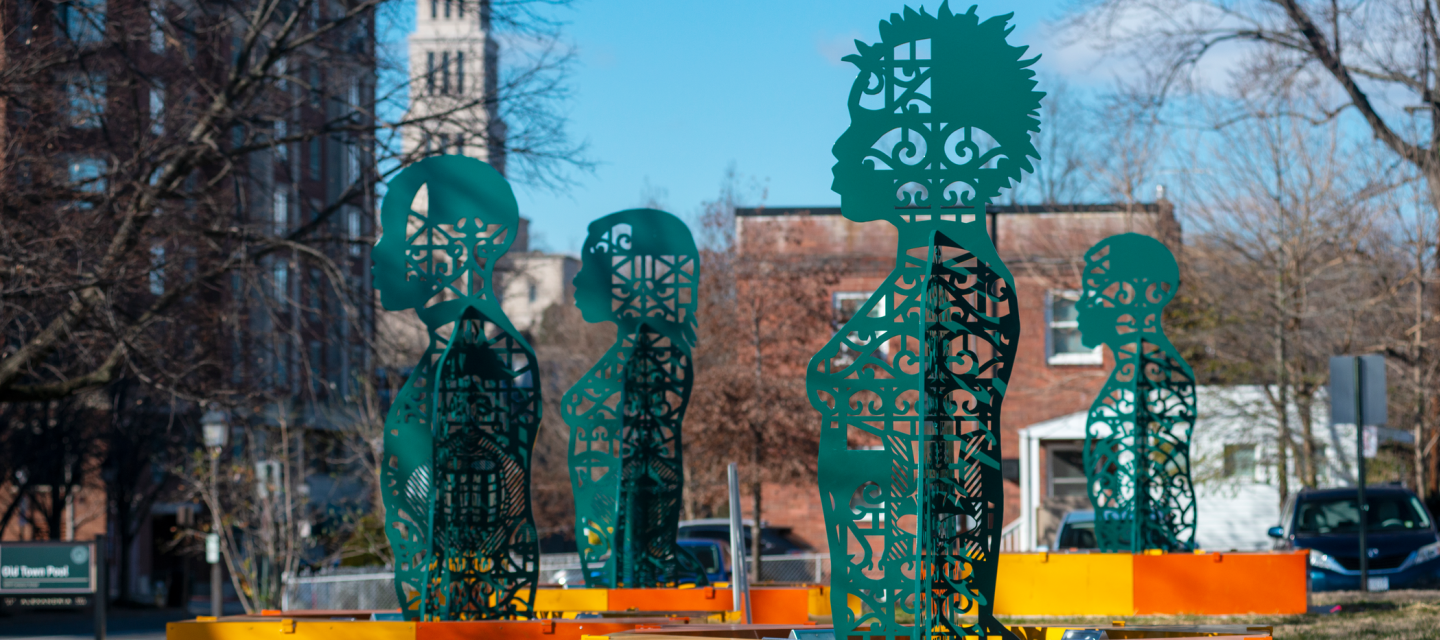
1609 Cameron Street (for a limited time)
Wrought, Knit, Labors, Legacies frames Alexandria’s African American history through the lens of the city’s industrial and merchant history from the 17th to 20th centuries. Once a prosperous port city and manufacturing hub home to one of the largest domestic slave trading firms in the country, Alexandria and its early economy were inextricably tied to the work of enslaved and free African Americans. See how Brooklyn-based artist Olalekan Jeyifous’ concept stitches Alexandria’s story together in his four ornate metal figures, incorporating symbols that represent Alexandria’s merchant and manufacturing history, including factories, tobacco warehouses and railways.
How to access: Street parking is available along Cameron Street, which is one way (westward)
7. African American Heritage Park

500 Holland Ln.
African American Heritage Park was created on the site of the city’s oldest known independent African American burial ground, the 19th-century Black Baptist Cemetery. The park is situated just west of the Alexandria National Cemetery and serves as a satellite location of the Alexandria’s Black History Museum. Visit the park’s visual focal point, a bronzed sculpture entitled Truths that Rise from the Roots – Remembered, created by Jerome Meadows, which honors the contributions of African Americans to the growth of Alexandria.
How to Access: The park is located at 500 Holland Ln., on the east side of Holland Ln. and just to the south of Duke St. Ample metered parking is available on Jamieson Ave.
Explore More:
- Walk to the Alexandria National Cemetery, whose interred represent 37 regiments of the U.S. Colored Troops. During the Civil War, African American patients at the L’Ouverture Hospital petitioned for the right of their fallen comrades to be buried in the National Cemetery rather than the segregated Freedmen’s Cemetery. To reach the cemetery from African American Heritage Park, turn right on Jamieson St. from Holland Ave. and walk alongside the iron fence across Hoofs Run Creek to the stone wall, where you will reach an entrance gate. The USCT are interred at the far side of the cemetery’s southern wall, beside a large magnolia tree.
8. Southernmost D.C. Cornerstone Laid by Benjamin Banneker
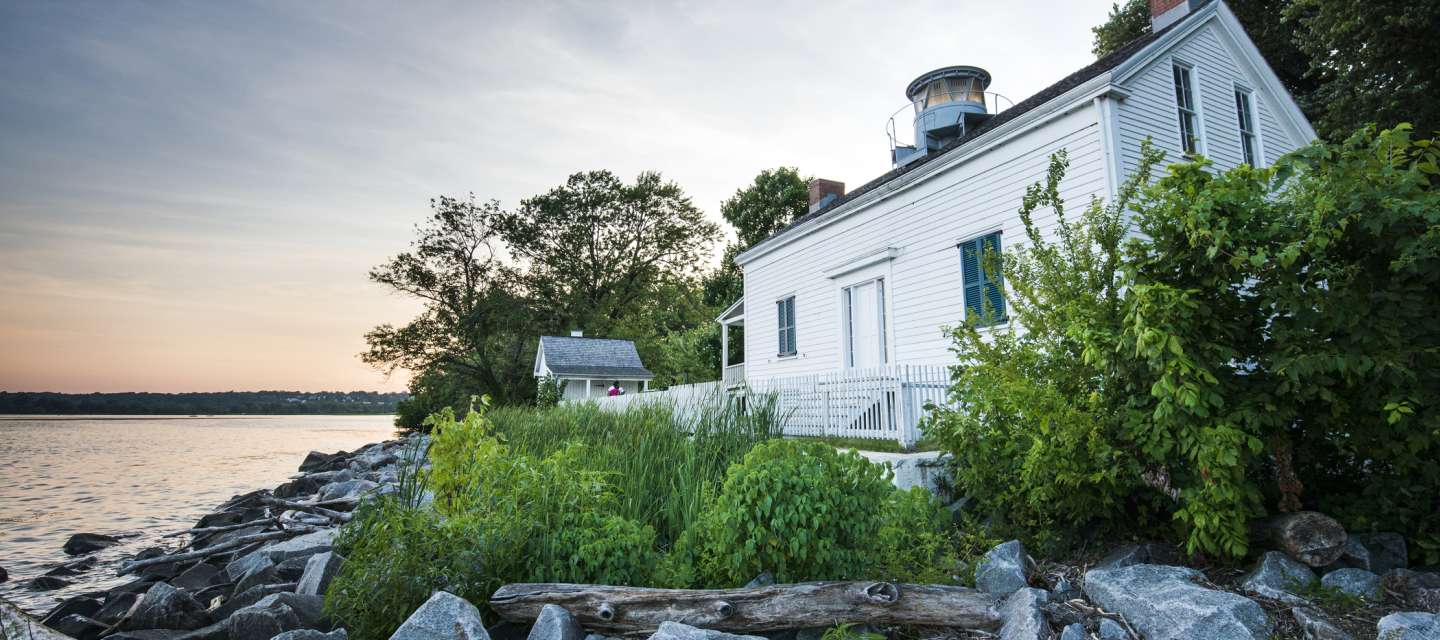
Jones Point Park
Jones Point Drive
The southern D.C. cornerstone represents one of the oldest artifacts associated with the survey of the U.S. capital. Benjamin Banneker was a Black self-educated mathematician and astronomer chosen in 1791 to join a surveying team to locate and maintain the south perimeter of the capital boundary in Jones Point through astronomical calculations. While assisting the capital survey, Banneker recreated from memory the entire plan for Washington when Pierre L’Enfant, the original planner, quit and took the plans with him. Access to the team’s finely-tuned instruments possibly enabled Banneker to make the necessary calculations for his 1792 publication Almanack and Ephemeries, which gained him national renown.
How to Access: Walk from the lot at Jones Point Park and down the Mount Vernon Trail to find the Jones Point lighthouse. The southern cornerstone is in a recess of a retaining seawall just east of the historic lighthouse.
Explore More:
- Make your way back to King St. and head to the corner of King and N. Pitt St. to find a brand-new mini kiosk commemorating the Loving v. Virginia Supreme Court decision, the 1967 ruling legalizing interracial marriage throughout the United States. The law firm Cohen, Hirschkop & Hall represented Mildred and Richard Loving from their former 110 N. Royal St. office around the corner from the marker.
9. "The Fort" African American Community Site
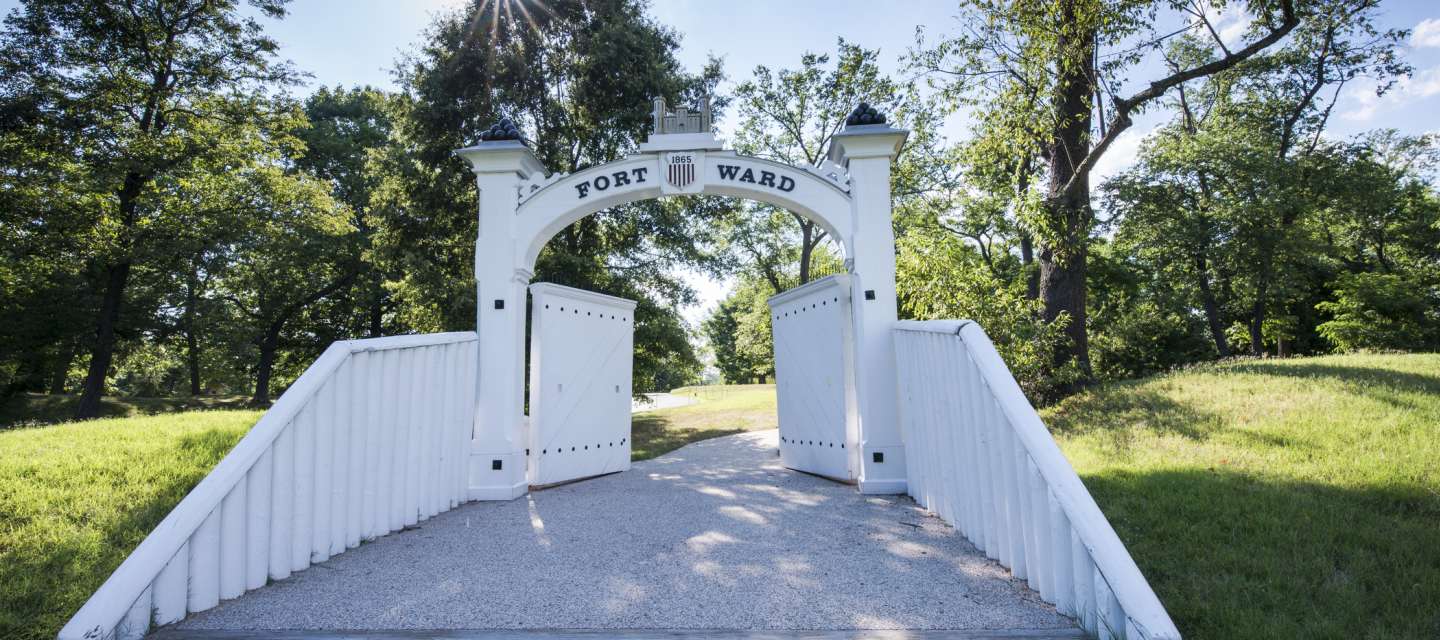
Fort Ward Museum & Historic Site
4301 W. Braddock Rd.
Fort Ward protected the nation’s capital and the vital seaport of Alexandria as one of the largest Union forts in the Civil War Defenses of Washington. After the war, a group of formerly enslaved African Americans bought land here and established a community known as “The Fort.” Despite facing social and legal inequalities, the residents of “The Fort” built homes, churches and a school and created a robust community. Beginning in the 1950s, as the City of Alexandria made plans to establish Fort Ward Park and restore the historic fort for the Civil War Centennial, the African American presence faded from view as residents were displaced, buildings demolished and burial sites lost. However, the remains of home foundations, artifacts and grave sites have survived underground. The Oakland Baptist Church stands on King Street as a landmark to the community. Reflect upon this community and learn more from outdoor interpretive markers on the grounds of this 45-acre historic park.
How to Access: Parking is free at Fort Ward’s dedicated visitor lot.
